A Practical Guide

Introduction
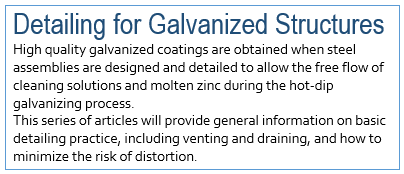 The role of the structural steel detailer is continually evolving. In a relatively short space of time, steel detailing has advanced from pencil and paper to what is today full blown 3D modelling and detailing, able to automatically generate the necessary detail documents and digital NC files to drive the automation process. In addition, structural detailers can now work collaboratively with other trades and professions from anywhere in the world using BIM (Building Information Modelling) technology.
The role of the structural steel detailer is continually evolving. In a relatively short space of time, steel detailing has advanced from pencil and paper to what is today full blown 3D modelling and detailing, able to automatically generate the necessary detail documents and digital NC files to drive the automation process. In addition, structural detailers can now work collaboratively with other trades and professions from anywhere in the world using BIM (Building Information Modelling) technology.
Yet, notwithstanding these developments, the nuts and bolts of steel construction has changed remarkably little in the past 100 years. The steel profiles in common use and the means we employ to join them together would be recognized by our Victorian predecessors – so though technology has changed the way we work, the general, well-established principles of Standardization and Best Practice are still valid today, but are in danger of being lost and forgotten.
Here at structuraldetailer.com we’ll examine the principles of Best Practice and demonstrate how they may be applied through a series of in-depth articles covering all aspects of steel detailing.
In addition, we’ll demonstrate how these principles can be put to practice in the real world by applying the Latest in 3D Modelling and Detailing Technology using Parabuild
 The Role of the Structural Detailer
The Role of the Structural Detailer
The detailer’s role is not clearly defined – it depends on the responsibilities delegated to you by the contractor or fabricator – it’s not an ideal situation and can lead to some confusion or even conflict, so here, we’ll take a look at what responsibilities the detailer should reasonably be expected to take on. >> Read More
Best Practice could be defined as saying “This is the way it should be done” it’s not taught at university or technical college, it’s poorly documented, it’s not officially sanctioned, and yet, it’s recognized by all those in the steel construction industry. >> Read More
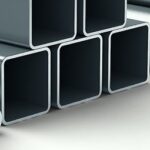 The Benefits of Standardization
The Benefits of Standardization
Standardization is the key to successful, efficient and economic detailing, the benefits of which are incalculable. It will reduce errors in the workshop, on site during erection - and speed up the entire process from concept to commissioning >> Read More
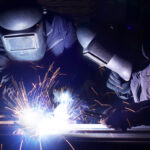 Welding is a key element in the detailing of structural steelwork, understanding the various welding processes and how to denote them on the drawings using the correct symbols is critical.
Welding is a key element in the detailing of structural steelwork, understanding the various welding processes and how to denote them on the drawings using the correct symbols is critical.
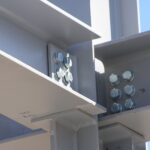 Engineers very rarely design each and every connection, preferring instead to leave it up to the fabricator / detailer.
Engineers very rarely design each and every connection, preferring instead to leave it up to the fabricator / detailer.
Reference guides will assist the detailer in weighing up the options and selecting the appropriate connection for the job.
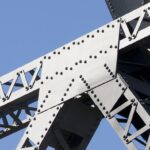 A steel structure must be stabilized in both the vertical and horizontal planes. There are a number of Options to do this, In the horizontal plane this may be either Horizontal Bracing or a steel or Concrete Composite Floor.
A steel structure must be stabilized in both the vertical and horizontal planes. There are a number of Options to do this, In the horizontal plane this may be either Horizontal Bracing or a steel or Concrete Composite Floor.
In the vertical plane, is could be a Shear Wall, Vertical Braced Frame, or a Moment Frame.
Standard Connection Details
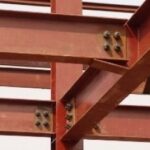 The benefits of Standardization are clear. Under each of the connection topics we include standard connection details to assist the detailer, which may be used 'as-is' or modified to suit the fabricators preference. All standard connections are prepared according to Best Practice. They include:
The benefits of Standardization are clear. Under each of the connection topics we include standard connection details to assist the detailer, which may be used 'as-is' or modified to suit the fabricators preference. All standard connections are prepared according to Best Practice. They include:
Welded End Plates, Welded Fin-Plates, Bolted End-Cleats, Gusset-Plates
 There are numerous different bolt types, add to that, the various threads, grades and property classes - it can all become a bit confusing. Here we'll unpick the confusion to what the detailer should know
There are numerous different bolt types, add to that, the various threads, grades and property classes - it can all become a bit confusing. Here we'll unpick the confusion to what the detailer should know
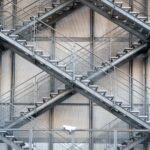 A badly designed stairway is an accident waiting to happen - here, by adopting the principles of Best Practice you'll be able to draw and detail any stair to suit any specific application.
A badly designed stairway is an accident waiting to happen - here, by adopting the principles of Best Practice you'll be able to draw and detail any stair to suit any specific application.
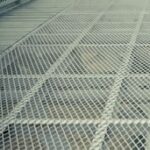 Steel floors are formed from either a Solid Raised Pattern Steel Plate or an Open Grid Grating. They are usually found in Industrial buildings, walkways, platforms and fire escapes. The key to the successful placement is linked to the layout of the supporting steel
Steel floors are formed from either a Solid Raised Pattern Steel Plate or an Open Grid Grating. They are usually found in Industrial buildings, walkways, platforms and fire escapes. The key to the successful placement is linked to the layout of the supporting steel
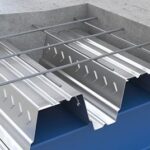 The Composite Concrete Floor is generally found in commercial or residential buildings and doubles up as the horizontal stabilizing system. Here we'll look at the how they are indicated on the drawings with common construction details.
The Composite Concrete Floor is generally found in commercial or residential buildings and doubles up as the horizontal stabilizing system. Here we'll look at the how they are indicated on the drawings with common construction details.
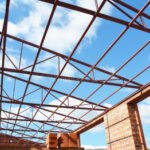 A Girder-Truss is a generic term for a composite member which is fabricated from multiple elements. They are commonly employed as roof-trusses, wind-girders, bridge-girders and gantries.
A Girder-Truss is a generic term for a composite member which is fabricated from multiple elements. They are commonly employed as roof-trusses, wind-girders, bridge-girders and gantries.

